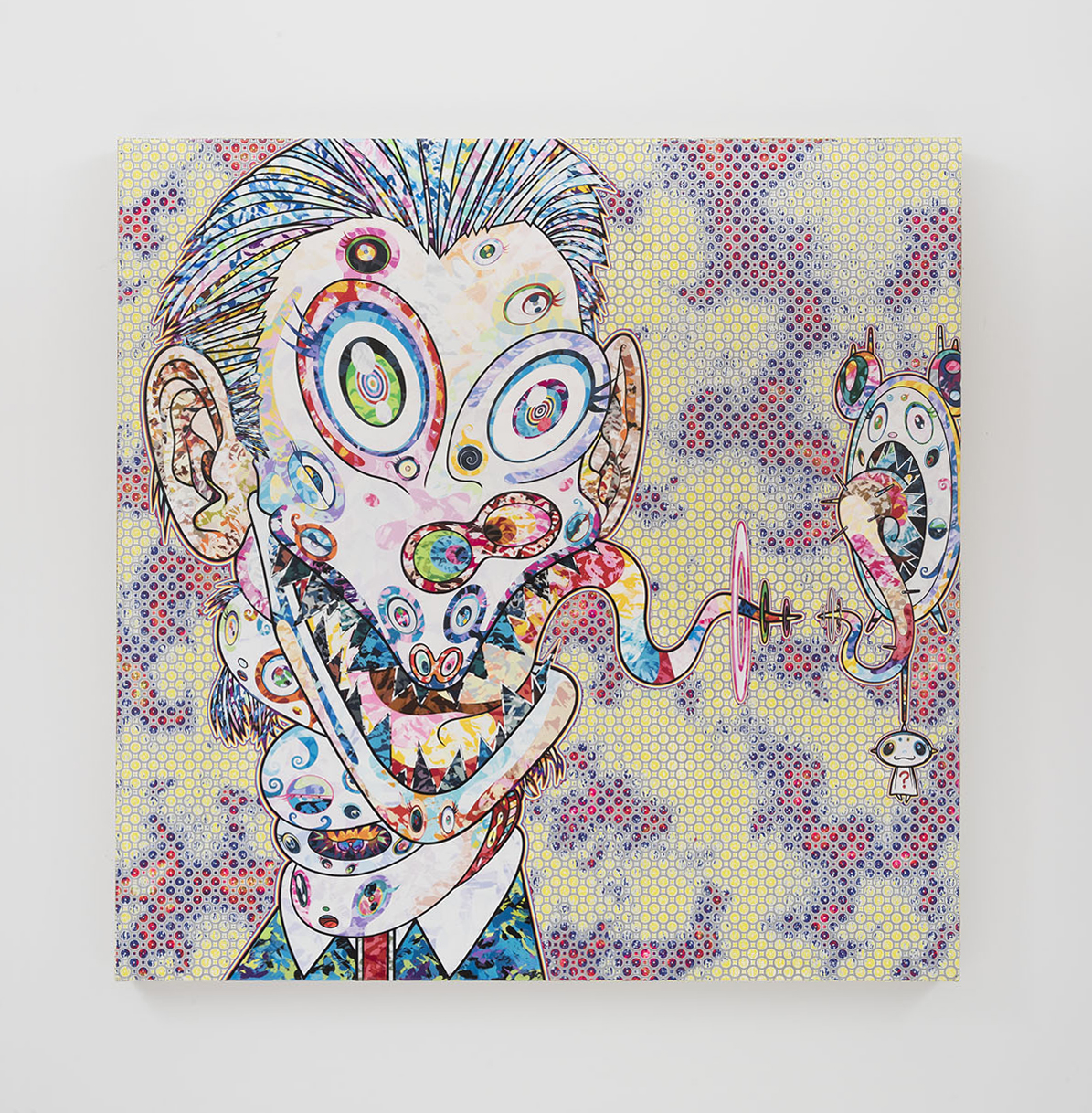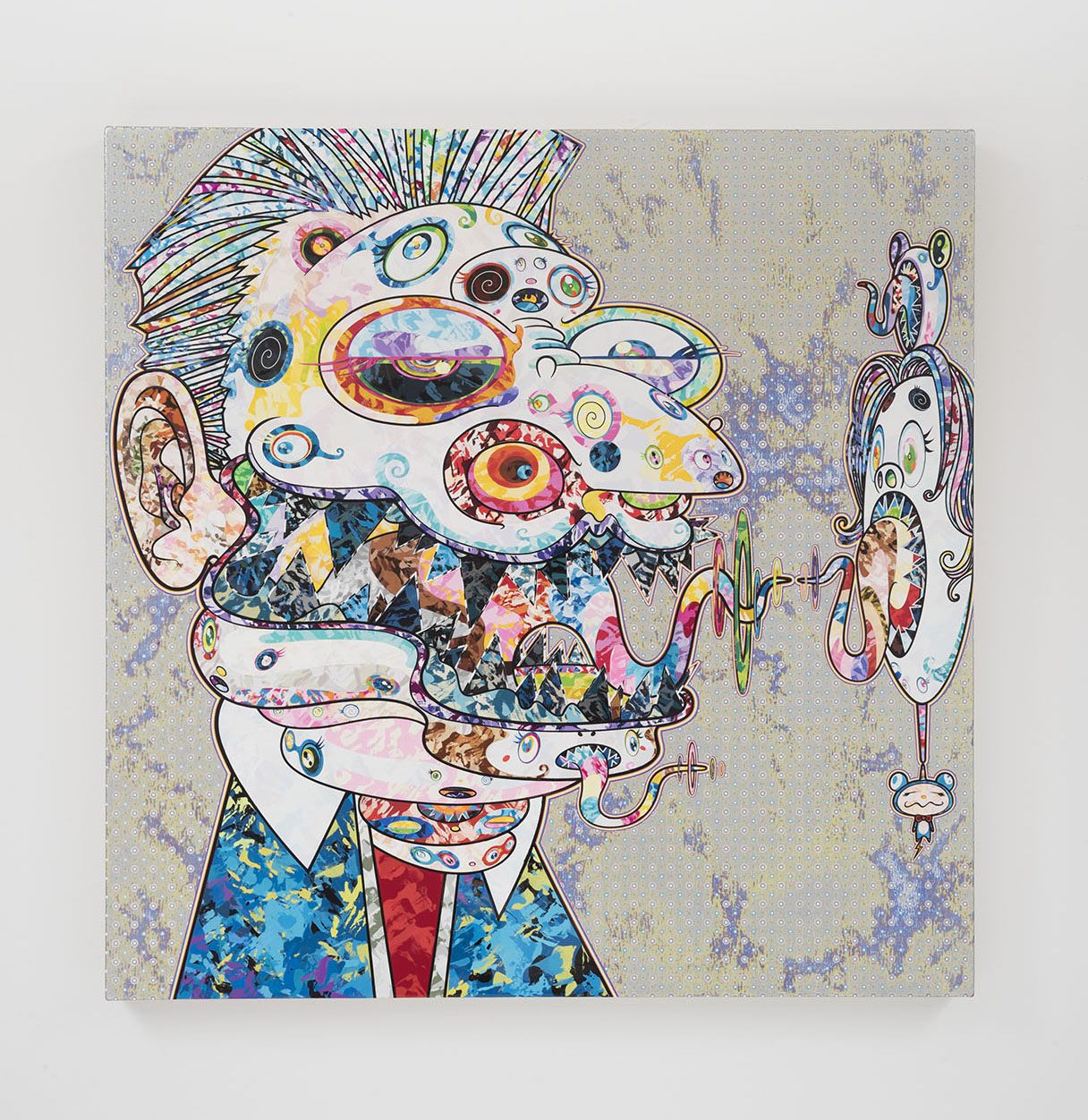On struggling to do your best
Prelude
Takashi Murakami is a contemporary Japanese artist. Similar to how Andy Warhol had his Factory, Murakami operates from his studio and company, Kaikai Kiki Co., Ltd which has locations in New York, Los Angeles and Tokyo. He makes large-scale paintings and sculptures, showing the work in numerous museum and gallery exhibitions all over the world in venues such as the Brooklyn Museum, Guggenheim Museum Bilbao, amongst others. Here, he talks about his relationship to art history, image-making and what may, or may not define madness on the occasion of his new three-floor exhibition titled, ”HEADS↔HEADS” at Galerie Perrotin in New York. The exhibition presents a new series of paintings inspired by the work of Francis Bacon.
Editor’s note: This interview is part of a series on creative anxiety.
Conversation
On struggling to do your best
An interview with artist Takashi Murakami
As told to Katy Diamond Hamer, 1428 words.
Tags: Art, Inspiration, Process, Success, Creative anxiety.
What inspires your choices of color before arriving at a finished project? Do you always make preparatory drawings first?
I usually draw from my past work regarding color and shapes, but with the recent Bacon paintings, I’m inspired by the original painting he made, so at first I tried to imitate it and then I would get confused and not be sure how to proceed. I would apply paint to the surface and then sand it down to experiment with different colors so it’s a little different and there is no set way at arriving at the final colors—but mainly, I choose based on my past works.
In most of your paintings there are elements, such as the smiling flowers, happy motifs and yet I find that the work is actually quite dark. You’re dealing with the darkness of commercialism, or the darkness of natural disaster and I was wondering if you could talk about that—the way the viewer is welcomed into the world that you create but then they discover another layer of existence, unexpected, within that world.
The otaku, geek people like myself, look at the world in a very simple, slanted way, so there’s darkness to it already from that point of view. For example, in George Lucas’ Star Wars Episode III, Anakin Skywalker is completely burned up and he’s like a little worm, squirming, his limbs gone. He then turns into Darth Vader. So for the otaku mindset, there is that kind of dark world view and it naturally oozes out of me. My flower paintings are very popular and I receive many commissions for this work. To be honest, I can get bored so I need to step away and look for other things to be inspired by before returning to the flowers.

Takashi Murakami, from HEADS↔HEADS, Courtesy of Perrotin. © 2018 Takashi Murakami/Kaikai Kiki Co., Ltd. All Rights Reserved.
I’m a fan of Francis Bacon and his work, specifically the portrayal of his relationship to George Dyer, a former lover and a subject in many of his works. Dyer passed away from an overdose and it haunted Bacon. Since George Dyer is one of the subjects you’ve recreated in your paintings, can you say if he was of interest to you?
I first made a work in homage to Bacon, imitating his painting with my character Mr. DOB. I couldn’t imagine myself drawing human faces at that time (which you can see of version of in the show at Galerie Perrotin). My generation of artists is, of course, Post-Pop Art. Jasper Johns’ work was about not creating his own subject or imagery, so in order to not create his own image, Jasper Johns painted flags. Warhol used the image of Marilyn Monroe and later on people used an existing poster, framed it and called it art. It’s really about not actively creating imagery.
I approached this coming from a background of cute Japanese kawaii culture and that first homage to Bacon was really well received. I was always looking for shapes and forms and reasons to paint. I made two Bacon inspired paintings and then didn’t come back to the subject for four years, until the most recent work. In 2016, I was still using my avatar Mr. DOB as the figure in the work, but then I realized that maybe I didn’t need to use him. Two years ago I decided to go directly to the source and paint more of my interpretation of human figures and literal faces.

Takashi Murakami, from HEADS↔HEADS, Courtesy of Perrotin. © 2018 Takashi Murakami/Kaikai Kiki Co., Ltd. All Rights Reserved.
I actually am not that interested in his love relationships but I’ve seen the image of his [chaotic/disorganzied] studio, and my first impression was that he must have had some kind of mental illness or madness. On the contrary, my studio and staff is completely organized. It is pristine. But is that also sort of a mental illness or madness? Because if something is out of order I can’t function. So in both cases comparing Bacon and myself, I think we are trying to externalize what’s inside our brains and after being able to do that then we can create our work. So rather than his personal life I’ve been more interested in how his brain works as an artist.

Takashi Murakami, from HEADS↔HEADS, Courtesy of Perrotin. © 2018 Takashi Murakami/Kaikai Kiki Co., Ltd. All Rights Reserved.
Your work appeals to so many people, which is something that I feel makes it special, but I’m curious because it also feels personal and is about your own experience as a human, as an artist as a spiritual entity in the world. Do you feel that this is true? That the work is you and you are the work?
I’m really thankful that you would perceive it that way because I am in the studio 24/7 and am really struggling to do my best, so if you can see that, that is very encouraging. The reason I say that I’m appreciative of your comment/observation is that I really think about why artworks have become so expensive and I buy artworks and, of course, look at artworks and I’ve been wondering what’s the difference between artwork and film or concerts and what I should be providing my audience as a professional artist. I’ve encountered artists who have been very important in my life, the first being Warhol and then Van Gogh. For example, the way Van Gogh lived his life really affected me. When I first became an artist, until maybe 10 years ago, I didn’t like Picasso at all and wondered why. I often think that the value of the work becomes elevated when the artist’s personality is entirely transferred onto the canvas. It’s a very difficult task to figure out.

Takashi Murakami, from HEADS↔HEADS, Courtesy of Perrotin. © 2018 Takashi Murakami/Kaikai Kiki Co., Ltd. All Rights Reserved.
It’s always easier to think about it as an analogy with the game of baseball. Think about a baseball player hitting a home-run after standing at the batting mound for just a few seconds. To achieve something in those few seconds they train every day. They train and meditate and try to shut out the noise of other players and the audience. Athletes are training their spirit and body and completely organizing themselves so that during those few seconds when they are at bat, the body automatically moves and in that moment, they can achieve something great. I think it’s also the same for an artist. I have to create that condition. So it’s not just about painting with a brush for hours and hours, it’s about creating that athlete’s few second condition where an artist can generate something new.
This type of moment visits me maybe 6 or 7 days out of 365 days of the year. But when it happens, perhaps an idea for a series that will go on for years to come or solution to some problem that I’ve been stuck with for many years will arrive. So in order to extract that pure self I’m training myself every day to exercise that muscle. If people, such as yourself, can see the results of that in my work, then I feel like it’s all worth it.

Takashi Murakami, from HEADS↔HEADS, Courtesy of Perrotin. © 2018 Takashi Murakami/Kaikai Kiki Co., Ltd. All Rights Reserved.
* o·ta·ku — noun (in Japan) a young person who is obsessed with computers or particular aspects of popular culture to the detriment of their social skills.
Five things that have been important and influential in my life by Takashi Murakami:
-
Galaxy Express 999 (manga animation, adapted for television and film, 1977-1981)
-
Star Wars (George Lucas, 1977)
-
Close Encounters of the Third Kind (Steven Spielberg, 1977)
-
A Vietnam war documentary I saw as a child
-
A recurring dream I had as a child, where I was being chased by robots.
- Name
- Takashi Murakami
- Vocation
- Visual Artist

Some Things
Pagination



